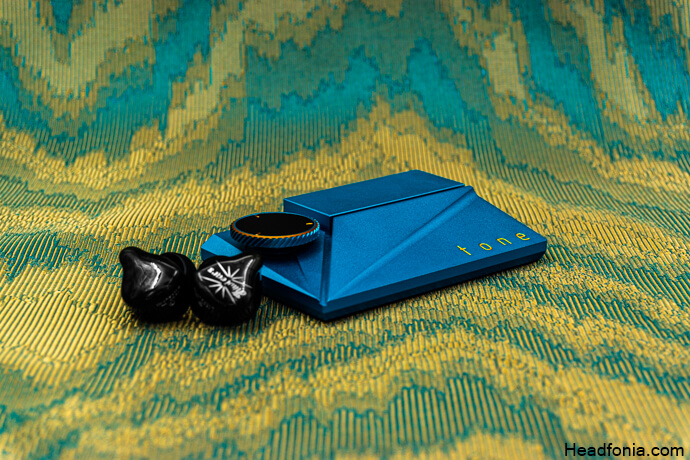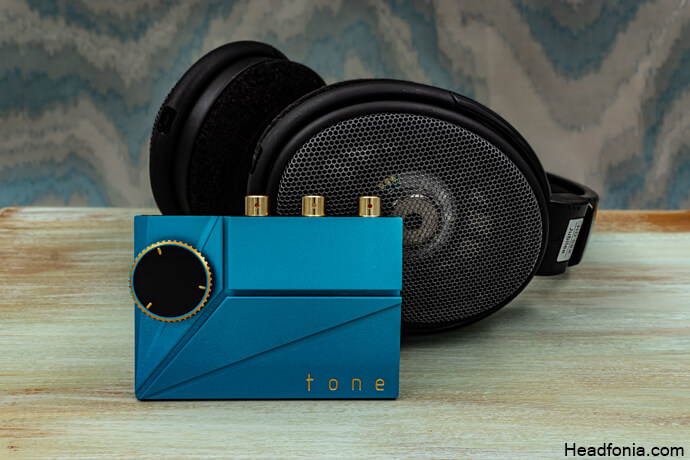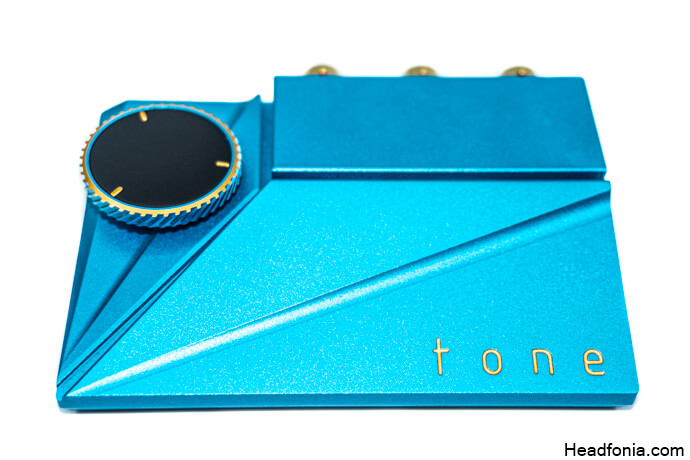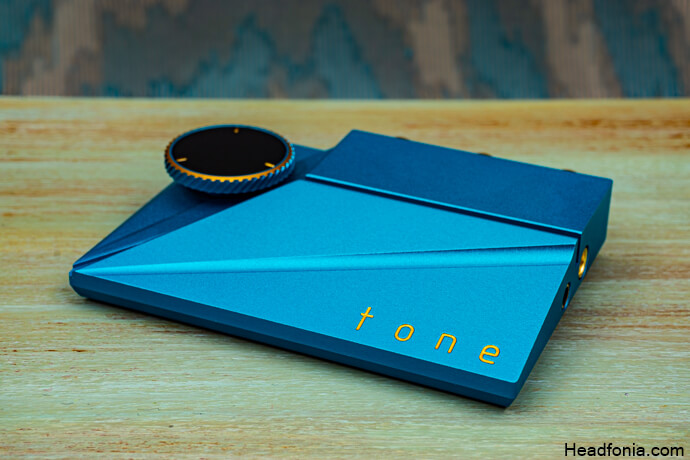Balanced RCA
As you know, normally, RCA has 2 signal paths, positive and ground. Khadas managed to divide and increase it to 3 paths so each jack and plug incorporates 1 ground pin and 2 signal pins. It is backward compatible SE RCAs and it takes much less space compared to XLR-3pin plugs. In my opinion, it is especially nice if you are designing a compact and small DAC where the saved space of inputs/outputs can be re-purposed to improve the audio circuitry. Khadas states that their balanced RCA jacks and plugs are covered under a protective patent (CN211265767U) and this patent is meant to keep this standard free and open source for all 3rd parties to utilize for their own benefit. Nice. I’d prefer 3-pin RCAs instead of hefty 3-pin XLRs honestly. Let’s see if this becomes a new standard in the upcoming years or not.

Power
The Tone2 Pro is a powerful device when you think about how small it really is. Its 4.4mm BAL headphone out can dish out 211mW into a 32Ω load and 167mW into a 150Ω load. The single-ended 3.5mm headphone out performs worse, it dishes out 125mW into a 32Ω load and 35mW into a 150Ω load. I fed my 58X without any issues from the 4.4mm BAL headphone out and it was quite satisfactory even at low gain. If you don’t have balanced cables and thinking about getting this DAC, I would recommend you to get some, it’s worth it. Let’s talk about the RCA outs.
The Tone2 Pro has a single-ended output of 2 volts and balanced output of 4 volts. Additionally, the output impedance of the hp outs is under 1Ω.
Sound
The Tone2 Pro has a flat and colorless presentation. It does not emphasize any band over another and it does not color the signature of the device you pair it with. It reflects the track as-is. After all, isn’t this the sole purpose of DACs? Anyway, I know that some of you like their signature with some spice, some warmth, however, I like mine just like this one. Colorless, as neutral as possible. I can color it all I want via headphones and IEMs but a DAC should be as transparent as possible in my opinion. I’m glad that we’re now at that part of the era where a $199 device can successfully provide a colorless, resolving presentation. It was a very rare circumstance, 2-3 years ago. The Tone2’s resolution is good and it offers plenty of details. Technically, it is not as good as its pure desktop rivals, such as the JDS Labs Atom+ DAC & AMP, however, for portable use, it is a very good competitor at this price. Let’s divide the sound section into few subsections to get a better hold of the SQ.

Low
The lows are clean, tight, and dependent on the pairing. For example, if you pair it with the Etymotic EVO, you get a very precise, fast, and tight bass response that is on the lighter side of the scale. If you pair it with the Sennheiser & Drop’s HD58X, you get rounded, powerful, and full-bodied lows. It scales very well with the equipment. It doesn’t overdo and emphasize the bass range to create an artificial excitement factor, it just reflects your gear to your ears. One thing that I noticed here though, yes, it provides enough power to drive 150-ohm headphones but that’s pretty much it. My Hifiman Deva really likes power and if I pair it with the Tone2 Pro, it does not offer the same bass authority it offers with the Atom+ stack. I haven’t had this problem with IEMs. Well, portable has its limitations and you can’t expect everything from a device that is just a little bigger than a credit card.
Mid
The midrange is clean, accurate, and neutral. The Tone2 Pro offers an adequate body and the instruments do not feel light or artificial. The vocals are centered, clear and precise. The neutral tonality of the Tone2 is highly revealing. It is easy to track the micro-details and harmonics. The texture and imaging are really good for the price. If you pair the device with a slightly warmer earphone such as the Tanchjim Audio’s ”Darling’‘, you get a very detailed but also romantic presentation. These two get along very well, the neutral and detailed side of the Tone2 complements the warmer side of the equally detailed Darling and they make a brilliant couple. Upper mids are just as controlled and the extension is ample with good transparency.
High
The Tone2 Pro has an impressive treble performance. The highs are clear, precise, and breathy. Everything is under control, no sibilance, no sharpness. The treble shows excellent control and the extension is very good. It scales pretty well with the equipment also. The treble does not feel lacking and it does not feel too much, Khadas managed to find the perfect balance. The Atom stack had the best treble extension under $200 USD price mark and the Tone2 performs close to that. This is not a small feat, don’t forget that the Tone2 is a portable device. Well done.

Technical Performance
Let’s start with the black background. Thanks to the excellent filtering stage and high-quality components, the Tone2’s background is as black as it gets. It is completely silent with all the IEMs in my inventory. Combine this with a good PRaT and adequate transient response, you have a serious contender in the sub 200 price bracket. Additionally, the instrument separation is great and the imaging is precise. One negative here though, despite its clear and defined positioning capability and imaging, its soundstage is not the widest and deepest when it comes to DAC & AMPs. It has a medium-sized soundstage but thanks to the adequate air between the instruments, it doesn’t feel claustrophobic at all.
Comparisons
vs. Tone1 aka Tone Board ($99 USD)
Let’s start by saying that the Tone1 was paired with the JDS Atom Amp for the comparison to be fair. The pairing sounds detailed, airy and technically capable. The neutral and flat signature is highly revealing and the resolution is quite good for the price ($200 USD with the Atom AMP).
Compared to the Tone2, this pairing offers a slightly faster PRaT and lighter note weight. Resolution-wise, the contenders are around the same mark and equally able. The soundstage of the non-portable pair is slightly bigger in terms of width. The imaging is slightly more precise with the Tone2. The treble extension feels more precise and defined with the Tone2 as well.
Do note that this pairing is not portable at all.
vs. iFi hip-dac ($149 USD)
iFi’s hip-dac is a portable DAC & AMP and it is a great product with reasonably good pricing. It has a different signature than the Tone2. It sounds warm and bold with a smoothened treble response. It also has a medium-sized soundstage and good imaging, however, the Tone2 sounds much airier and transparent compared to the hip-dac. The detail-retrieval is also superior to the Tone2 as well as the resolution. The hip-dac has a bigger, more authoritative low-end punch compared to the Tone2 but Tone2 makes it up with the exceptional treble reproduction.
Last Words
Honestly, Khadas did a great job with Tone2 Pro. Thanks to excellent engineering and high-quality components, it manages to deliver incredible performance in such a small package. The design, the finish, the build quality, everything is top-notch. The only negative side of the Tone2 is the navigation method. Apart from that, it can easily be your favorite portable DAC & AMP if you regularly listen to music with In-Ear Monitors. I am quite excited to see what comes next from the Khadas company as this was quite pleasant to review and listen to!

Specifications & Technical Data
| Finish | Black, Red, Blue | |
| Materials | Enclosure/Volume Knob: Aircraft-Grade Aluminum | |
| Bottom Cover: ABS, Polycarbonate | ||
| Foot Pad: Silicone | ||
| DAC Performance [1] | Balanced RCA: | |
| THD+N | 0.000126% (-118dB) | |
| THD+N, A-Weighted | 0.000112% (-119dB) | |
| Noise | 3.5uVrms | |
| Noise, A-Weighted | 2.75uVrms | |
| DNR | 121dB | |
| DNR, A-Weighted | 123.5dB | |
| Crosstalk, 200KΩ | > 120dB | |
| Output, 200Ω | 4.0 Vrms | |
| Frequency Response, 20Hz~20KHz | ±0.15dB | |
| Single-End RCA: | ||
| THD+N | 0.000158% (-116dB) | |
| THD+N, A-Weighted | 0.000141% (-117dB) | |
| Noise | 2.0uVrms | |
| Noise, A-Weighted | 1.6uVrms | |
| DNR | 119dB | |
| DNR, A-Weighted | 122dB | |
| Crosstalk, 100KΩ | > 118dB | |
| Output, 100Ω | 2.0 Vrms | |
| Frequency Response, 20Hz~20KHz | ±0.15dB | |
| Headphone Amplifier Performance [1] | 4.4mm Headphone: | |
| Output Impedance | <0.3Ω | |
| THD+N, 1KHz, 300Ω | 0.000158% (-116dB) | |
| THD+N, 1KHz, 150Ω | 0.000158% (-116dB) | |
| THD+N, 1KHz, 32Ω | 0.000282% (-111dB) | |
| Noise | < 4.2uVrms | |
| DNR | 121dB | |
| Max Output @300Ω | 83mW (5.0Vrms) | |
| Max Output @150Ω | 167mW (5.0Vrms) | |
| Max Output @32Ω | 211mW (2.6Vrms) | |
| Crosstalk, 32Ω | > 117dB | |
| Frequency Response, 20Hz~20KHz | ±0.15dB | |
| 3.5mm Headphone: | ||
| Output Impedance | <0.3Ω | |
| THD+N, 1KHz, 150Ω | 0.000200% (-114dB) | |
| THD+N, 1KHz, 32Ω | 0.000282% (-111dB) | |
| Noise | < 2.4uVrms | |
| DNR | 119dB | |
| Max Output @150Ω | 35.3mW (2.3Vrms) | |
| Max Output @32Ω | 125mW (2.0Vrms) | |
| Crosstalk, 32Ω | > 69dB | |
| Frequency Response, 20Hz~20KHz | ±0.15dB | |
| Sampling Rate | USB Input: PCM 768KHz 32bit | |
| USB Input: DSD 512MHz 1bit (Native) | ||
| Coaxial Input: 192KHz 24bit | ||
| Processor | XMOS XU216, 16 Real-time Logical Cores | |
| DAC Chipset | ESS ES9038Q2M 32-Bit Stereo Mobile Audio DAC | |
| Amplifier Chipsets | I/V Stage: TI OPA1612 x2 | |
| LPF Stage: TI OPA1612 x2 | ||
| Buffer Stage: RT6863D x3 | ||
| Ultralow Noise LDOs | 1x ESS ES9311Q, 1.3uVrms (10Hz-100KHz) | |
| 5x ADI ADP151, 9uVrms (10Hz-100KHz) | ||
| Jitter Filter Technology | Built-in Intel Altera MAX V CPLD, Pre-shaping Technology | |
| Accusilicon AS318-B Series Professional Audiophile Crystal Oscillator | ||
| O/S Compatibility | Windows 7, 8, 10 (Khadas USB ASIO driver required) | |
| MacOS | ||
| Linux (with UAC2 compliant kernel) | ||
| Android (supports OTG function) | ||
| iPadOS & iOS [2] | ||
| Rated Voltage | DC 5V | |
| Compliances | CE, FCC, RoHS | |
| Size | 17.0mm(h) x 88.0mm(w) x 61.5mm(l) / 68.0mm(with RCA) | |
| Weight | 100 grams | |
| Warranty | 1 Year Limited Hardware Warranty |
Page 1: Khadas, Tone1, Tone2 Pro, Packaging & Accessories, Design & Build Quality, Controls
Page 2: Balanced RCA, Power, Sound, Low, Mid, High, Technical Performance, Comparisons, Last Words, Specifications








